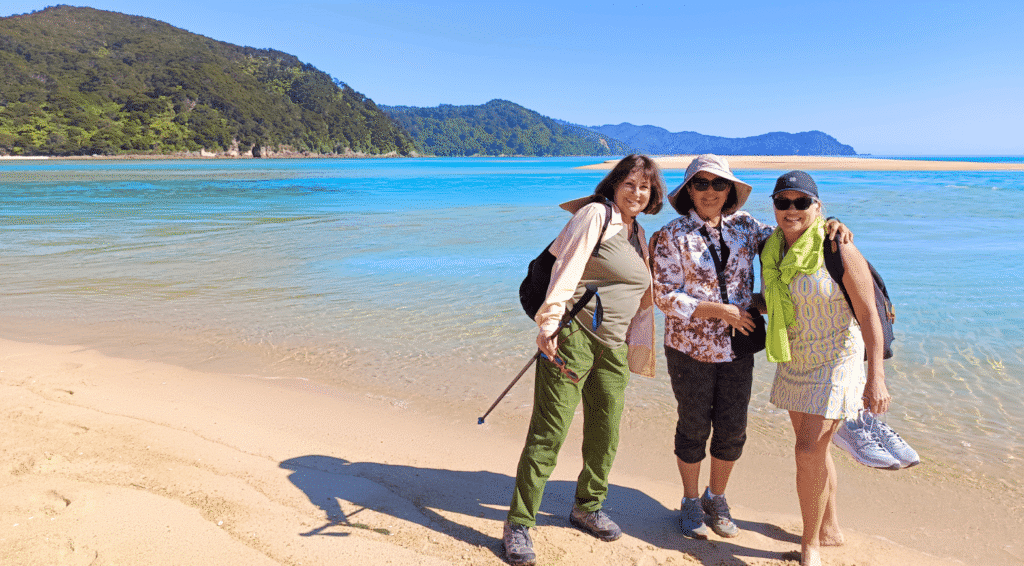From far-flung dream landscapes to city escapes to entire coastline, here are 15 exceptionally beautiful places that are being added to the bucket lists of luxury travellers in the know.
The map of the world is sprinkled with well-known cities in prominent serifs, usually hiding away equally glorious lands that enchant with their remarkable wonders. Tucked inside the continents or lingering in their own archipelago, 2020’s most anticipated destinations lure with otherworldly terrains and cultural legacies, all set to inspire at the arrival of the new decade.
Quick Summary: Patagonia, Ladakh, St. Petersburg, Mauritius, Dubai, Kyushu, Turkish Riviera, Tel Aviv, Central Vietnam, Rijeka, Egypt, Guatemala, Sicily, Mexico City & Galway.
Patagonia
Dramatic landscapes of ice and fire, with stark grasslands and deserts dominate the skirts of the icy fjords that lead to Los Glaciares in Argentina’s Patagonia. A gargantuan ice sheet covers the remarkable Moreno Glacier, wonderfully carved with winter hands and whispers striking glacial roars from its frosted body. The evening covers the dramatic icy scape with terror, but mornings illuminate the stark, blue colours into immaculate white backdrops that shine with diamond-like facets.
It is a region divided—one given to the icy chill of the Andes where gauchos thrive in their thick woollen coats, riding their horses while leading their cattle. Jovial ranches are hidden within the snowy depths, making a perfect stop-over for long drives. The stark mountains are accessed through a photogenic trip through the Seven Lakes, where strong winds blow between the glassy waterscapes and the snow-capped peaks. Bariloche, a swoony Alpine-like town, brims with the thoughts of hot chocolate and skiing, with stunning lake views lead to a string of quaint hangouts filled with campers. La Trochita, a steam-powered train, pierces through the railroads of Esquel and into the backwater towns of Bajo Caracoles. One’s greatest undertaking, one should note, is the El Chaltén, the most sought-after hiking destination in the world, with scenic hikes filled with forests and waterfalls, with sumptuous stops to many Patagonian restaurants to quell the hunger.
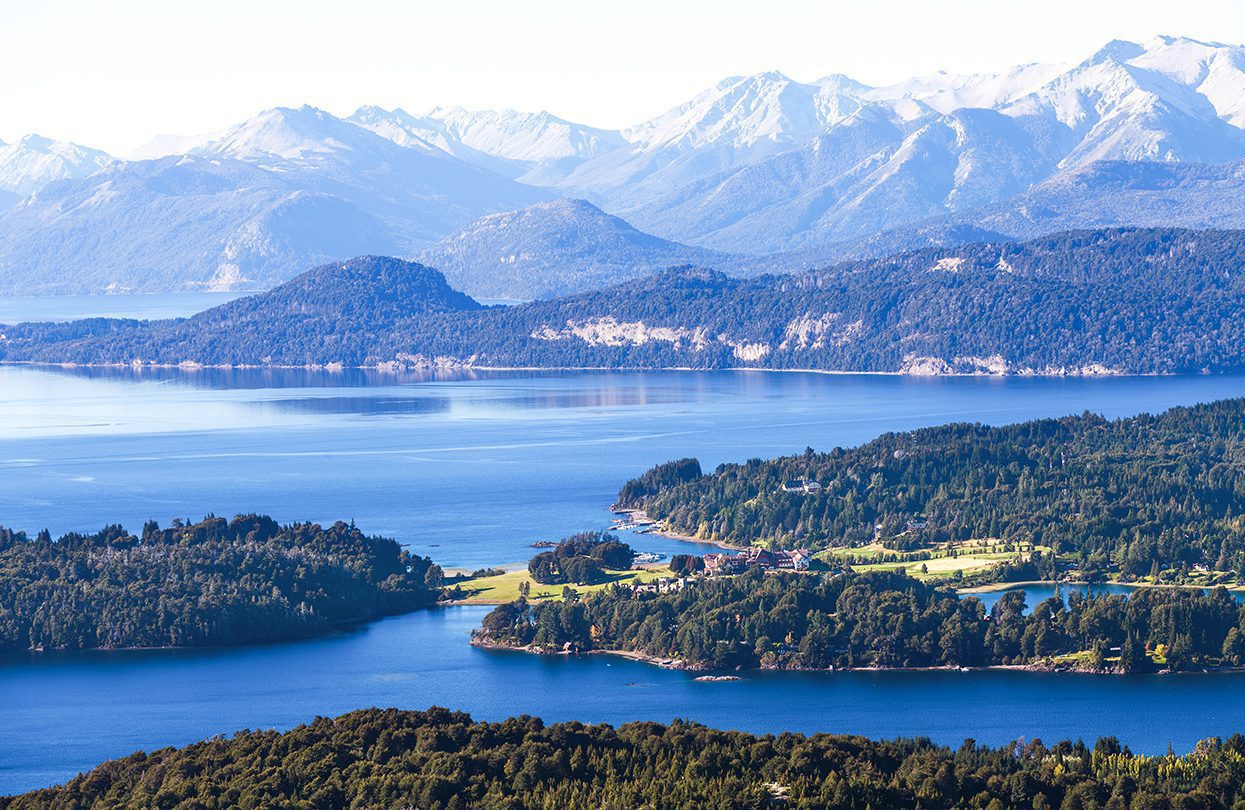
The other half of Patagonia is one dedicated to Argentina, a summary sight in blue, lodged at the tail of Rio Negro where the southern right whale occasionally peeps through the waters. At Puerto San Julián, Spanish explorer Ferdinand Magellan made his first step into the soil, encountering the lofty Patagones tribesmen whose mythical prowess gave birth to the region’s name. Magellan found his way into Patagonian living. A strait was named after him, one that leads to the dramatic Cabo Virgenes, a mystical island capped off with a lighthouse and a grand colony of wobbling Magellanic penguins.
Ladakh
A wistful landscape of sandy dunes, set beside sun-dappled stream-like rivers and overlooked by an array of icy mountains—Ladakh is a miraculous contrast of nature’s ultimate gifts, one that is almost supernatural to behold. The stony, icy terrain gazes down from above, cautiously keeping a secret beneath its robes, for inside its jagged exteriors is a kingdom sacred to men. As boots crunch on the jagged rocks, there is, at a distance, the faint sound of chanting, for the Buddhists have thrived here in secret, often leaving flags in sacred caves where they utter their purest prayers.
The concealed state of Ladakh is nestled in the northern edge of India. Created as a new state, Ladakh is a revelation, with a vast plain spreading in the east, a series of lakes that lead to a glorious winter-swept realm. Leh, the heart of Ladakh, is embraced by the raw peaks of Ladakh Range, beaming at the world with earthly colours and an extensive collection of Gompas that are seemingly carved out of stone. These Buddhist monasteries, wonderfully erected on the cliffside, offer the most panoramic views from above, all while dousing one with a sacred, meditative air that heals the heart.
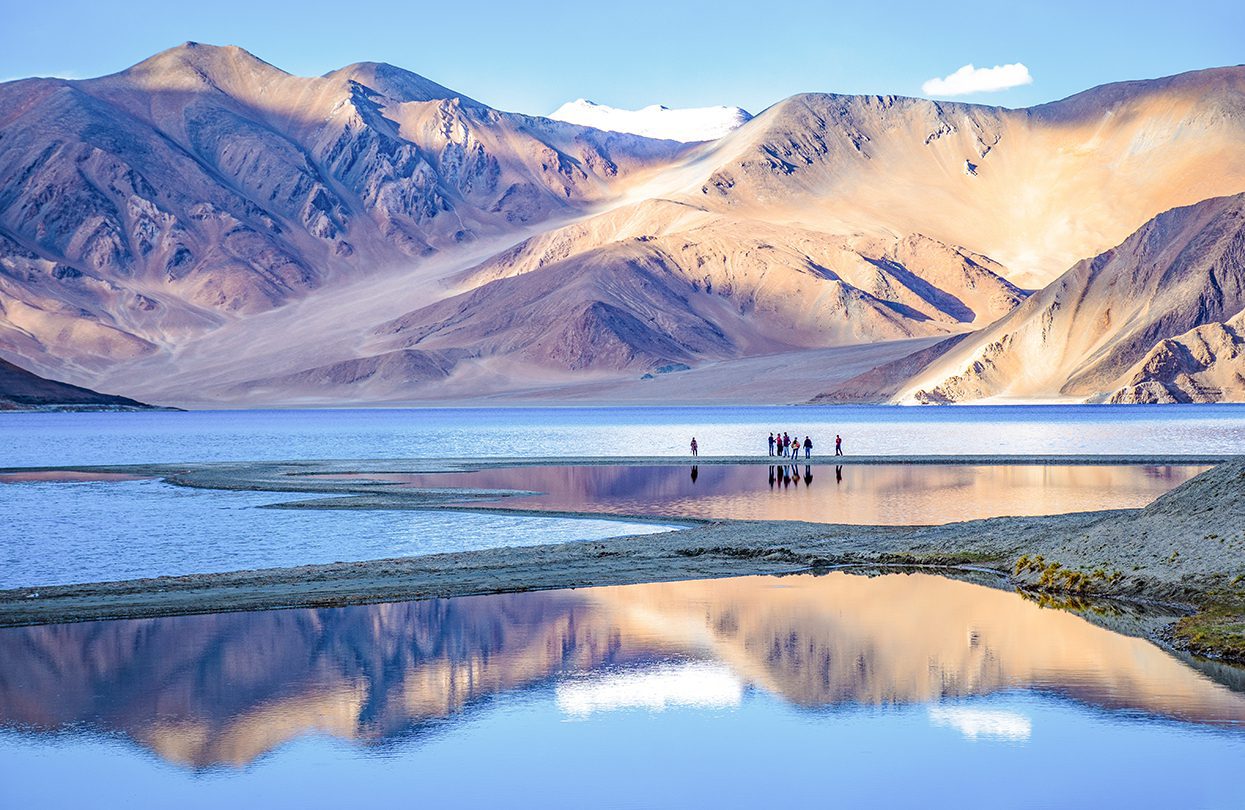
At Nimmu, frothy white waters ripple downwards, creating a path for rafting. The mountainous landscape beckon for trekking—the Karakoram Ranges befit climbers with a gripping expedition with its stony facets and remote stupas, hidden in the valleys, become a medal to every rocky conquest. Snowy passes become thrilling terrains with a 4×4 vehicle piercing through its wintry tracks. At Pangong Tso, sunrise becomes the most awaited event, with the golden rays beaming at the white tents spread across the shore. The hidden lakeside view is most beautiful at night, where millions of stars bespeckle the indigo sky, giving one a peek of the distant universe.
St. Petersburg
Pastel clouds, as if painted by a skilled artist’s paintbrush, are reflected over the tepid canals of Russia’s other imperial capital, whimsically lined with luxury homes and hotels to the end of the street like gems of a crown. Water boats traverse through its watery navel, sublimely making way to the Neva River where bigger ships cruise elegantly during summer, most of them crooning with an intimate serenade by its decks. It is the Venice of the North, exuding the same decadence and romance with its rustic stone walls and ornate metalwork. St. Petersburg however enchants with a few more wonders.
NevskyProspekt, the main street, is a generous display of Russia’s most iconic landmarks, all clad in their rustic stone facades that bear tales told by time. The historic boulevard, adorned with many baroque-style palaces, lingers with an old-world air; the State Hermitage Museum now occupies the Winter Palace, an imposing architectural spectacle that was once the residence of Russian royalties. The second-largest art museum in the world is the ultimate place to absorb a spark of genius, from Picasso’s best paintings to remnants of the Italian Renaissance.
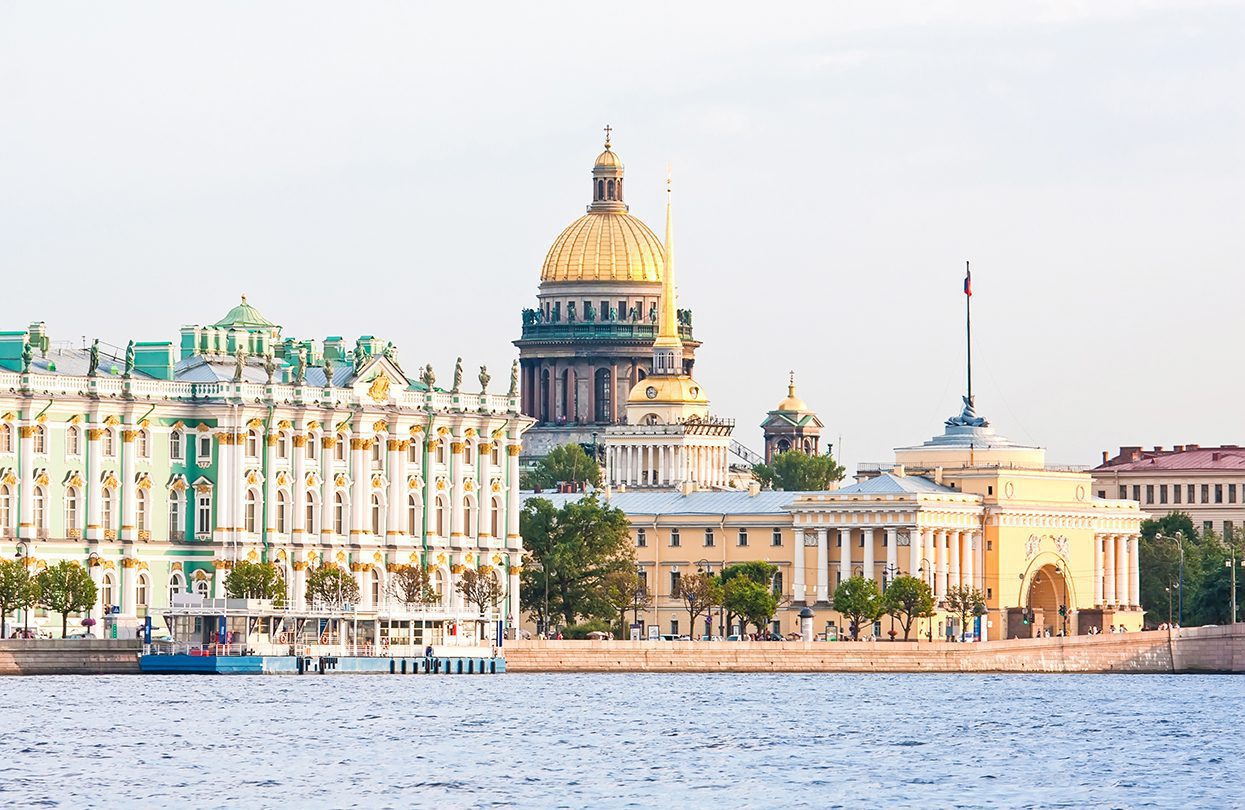
Beatiful view Neva river in Saint Petersburg, Russia, photo by Sailorr
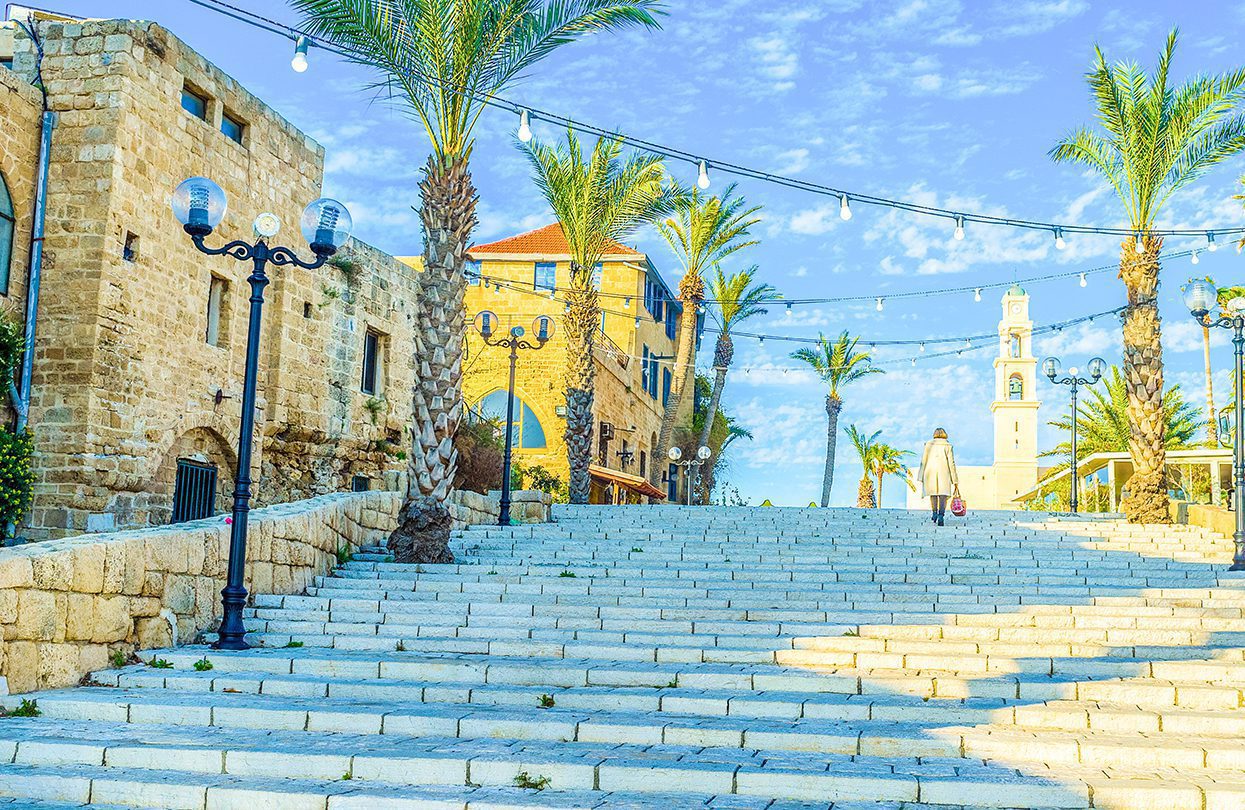
History and recollection become a recurring theme in St. Petersburg, for there is also the Russian Museum, spread over four sprawling palaces, and the more modern Erarta Museum, which curates contemporary pieces. Just within reach are a slew of cathedrals, all majestic in their own right, and globally acclaimed theatres that showcase highly satisfying performances of ballet, opera, and orchestra, for the more refined audience. For the lovers of souks, Eliseyev Emporium beckons with its Art Deco-inspired interiors, with its walls decked with souvenirs, chocolates and delectable caviar.
For a legitimate gastronomic getaway, wandering around Rubinstein Street leads to many delicious openings, with a line-up of contemporary dining venues that stirs St Petersburg with a lively nightlife. At nightfall, this avenue gains an eager crowd of fiery foodies, all geared up to absorb festive meals served with a hint of Russia’s multicultural flavours.
Mauritius
It is a modern-day Eden; an island marooned deep into the Indian Ocean, wonderfully cared for by its tropical winds and verdant, blue-green seas. Powder white beaches lead into its unsung paradise, where sunsets and sunrises throw gracious palettes on the luminous sea. Further into its forested zones, waterfalls ambiently cascade down its rocky cliffs, surrounded by green ferns that dances at the cool breeze. The Black River Gorges, boasting of the island’s best vistas, opens possibilities for a fresh hike, affording one to gape into the lush hills and strips of waterfalls. The Mauritian kestrel might show itself to unexpecting visitors, circling through the air with its long, white tail.
From Flic enFlac, where the towering cliffs create the perfect stage for the palm-lined shore, is a turquoise lagoon most sought for diving expeditions. Drop off at La Cathédrale, where a glorious landscape of ledges and stipples burst with colourful reefs, home to many marine species. Groupers, angelfish, lobsters, and snappers slither through the cavelets, while lobsters appear handsomely in their pincers. Rising from the west coast is Chamarel, a spectacular village that awakens the gastronomical adventurers. Tucked in its road town are fine-dining establishments that serve with a riveting Mauritian fare. Not to be missed is the Terres de 7 Couleurs, a singular museum that engages one’s senses.
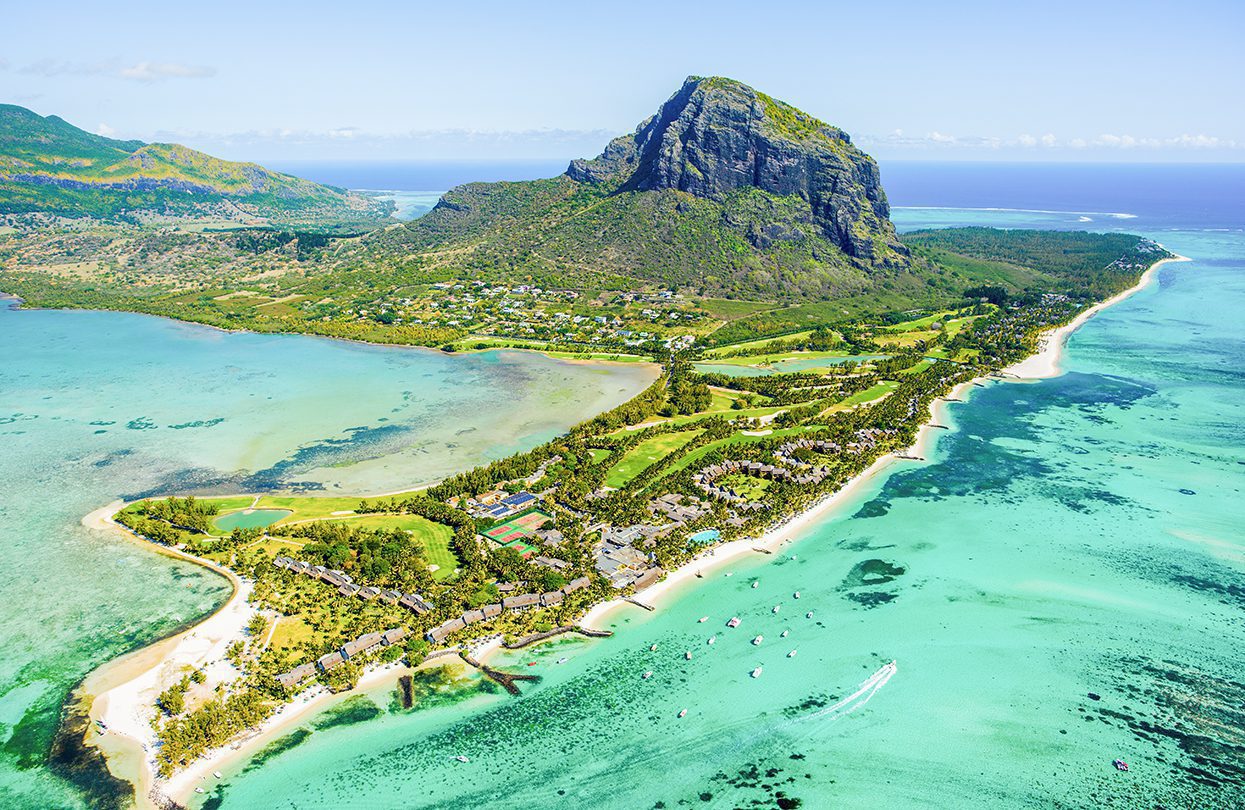
Mauritius island’s panorama of Le Morne Brabant mountain and beautiful blue lagoon, photo by Myroslava Bozhko
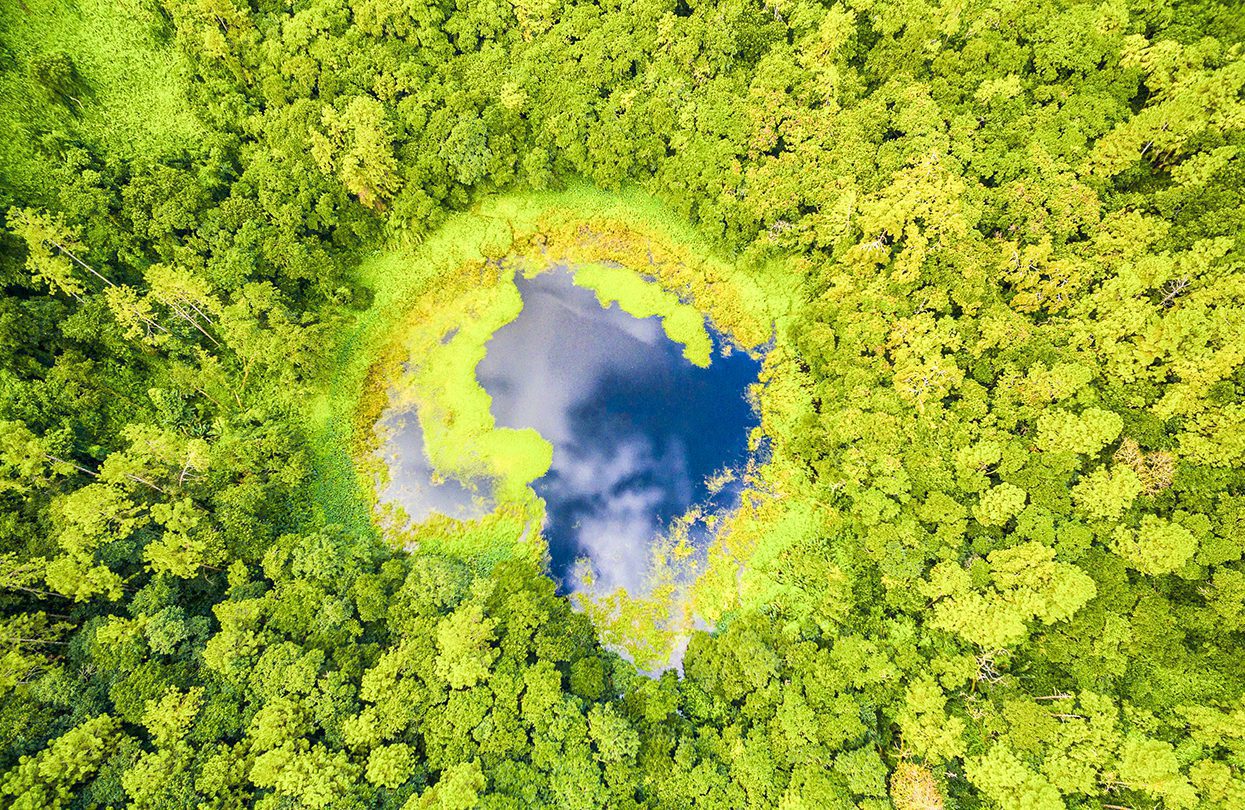
Lodged at the east coast of the island, Île aux Cerfs is the best venue to conquer the winds and water. The Deer Island, admired for its white sand beaches and gorgeous lagoon, is the best itinerary for water skiing and parasailing. Surrounded by lush greenery, a dormant volcano with a distinct, watery crater lies at Trou aux Cerfs. Murr’s Volcano, as it is locally called, rises 605 metres above the sea and creates a spectacular landscape from a distance. Jogging within its trails lead to jaw-dropping views of the Rempart Mountain, shaped like a sharp fang, the island’s most famous trekking destination.
Dubai
Towering skyscrapers light up the future-forward oasis tucked inside the sweeping Arabian Desert, revelling in its untamed environment while thriving with its swanky, excessive surprises. It is the playground for luxury, where globally cherished signature brands are common playthings, and cosmopolitan caves are gloriously decked with all kinds of opulence, including hints of gold in unexpected corners. Expansive shopping malls indulge the thrillers with decadent offerings, while on the horizon marks a picture-perfect spectacle as the sun glides up against the rising steel-and-glasswork perched all over the capital.
Burj Al Arab Jumeirah, shaped like the sail, is perched by the sandy shore, tickling one’s penchant for the sea while affording most stunning views of the city from its breath-taking deck. Downtown Dubai dazzles with the sight of Burj Khalifa and the bustling beehives of souks and epicurean feasts. Deep within its contemporary façade are traces of its history, translated through its diverse landscape and opulent Bedouin tents tucked in remote parts of the desert.
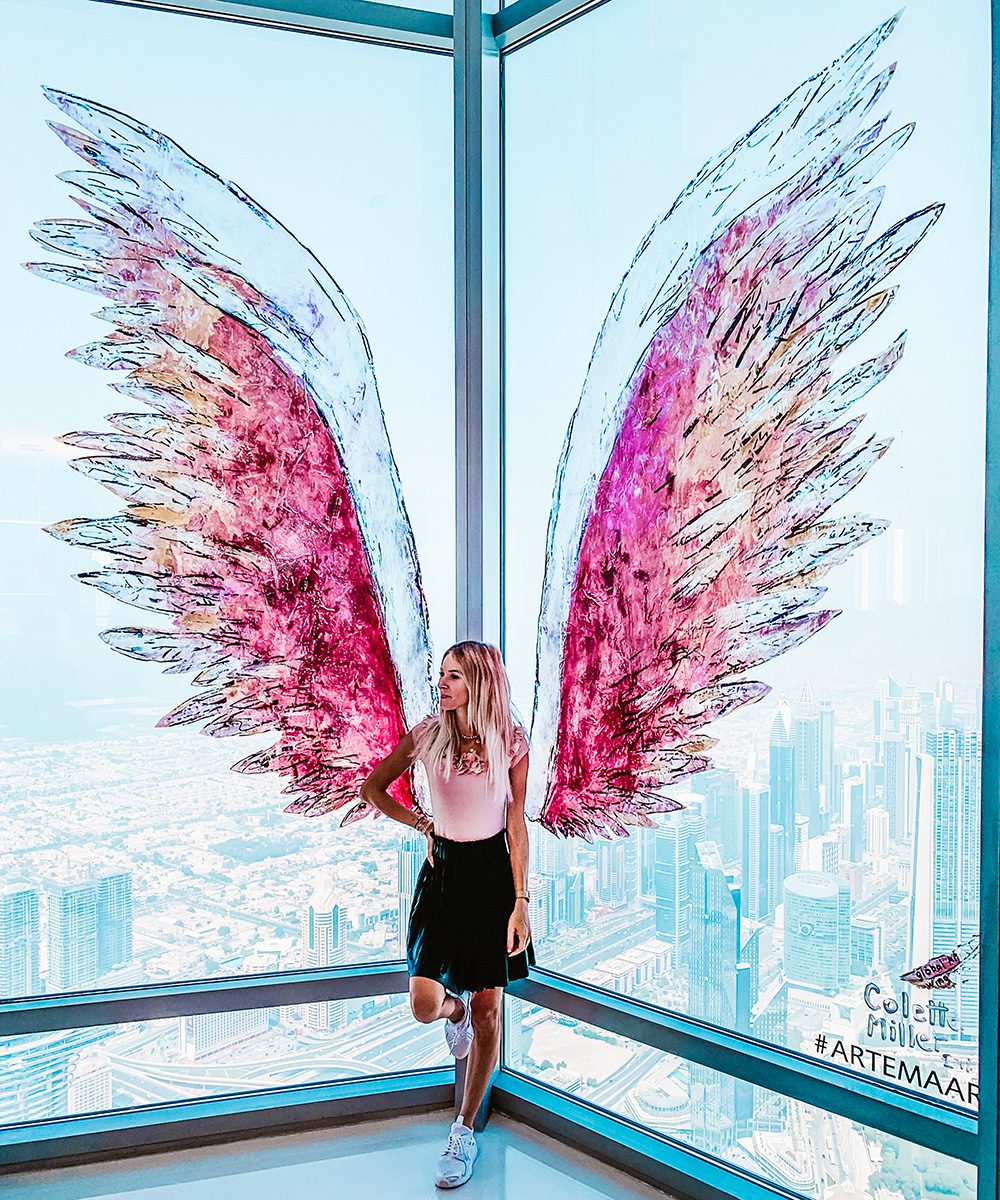
At The Top Wings Burj Khalifa, by Dubai Tourism
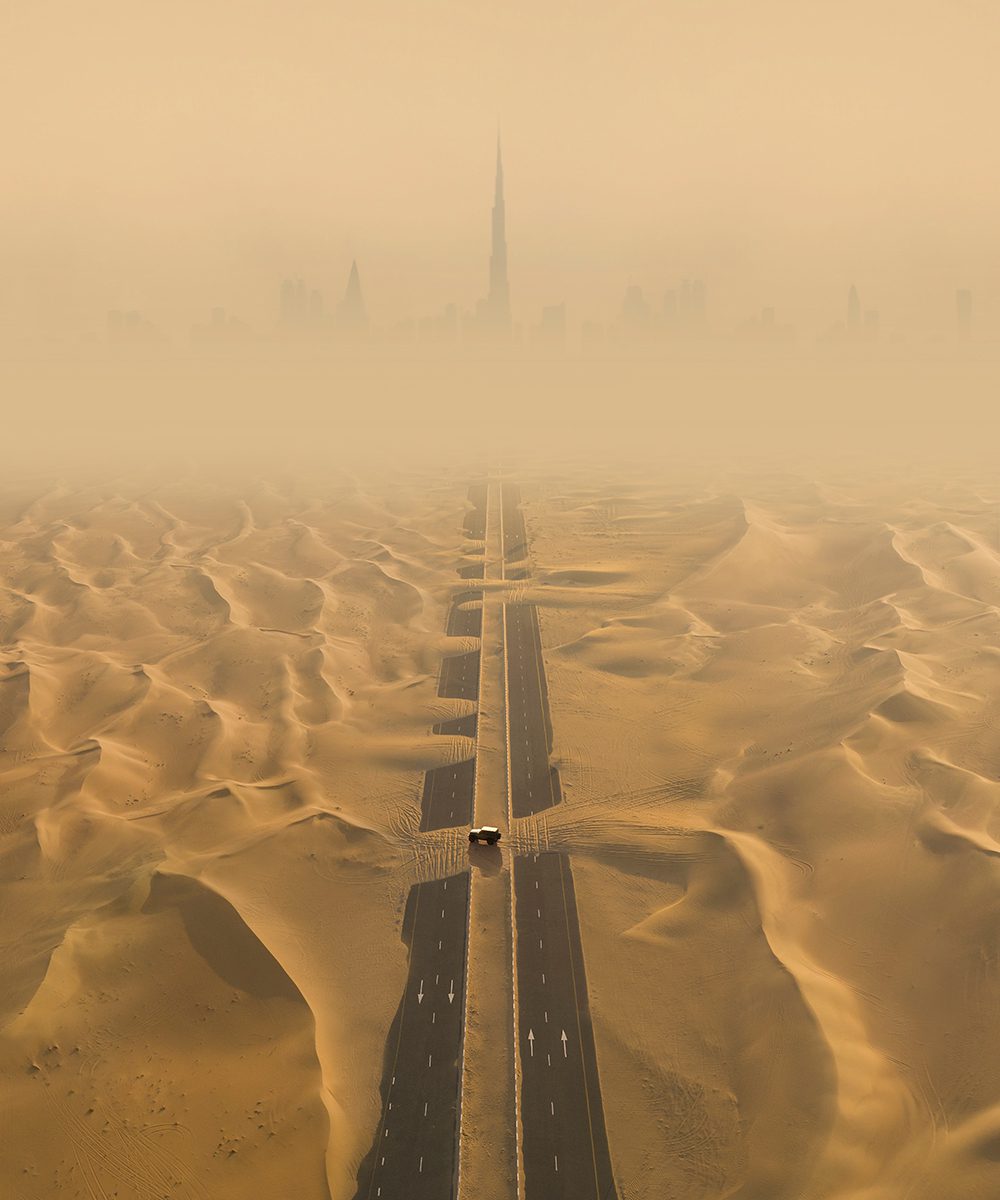
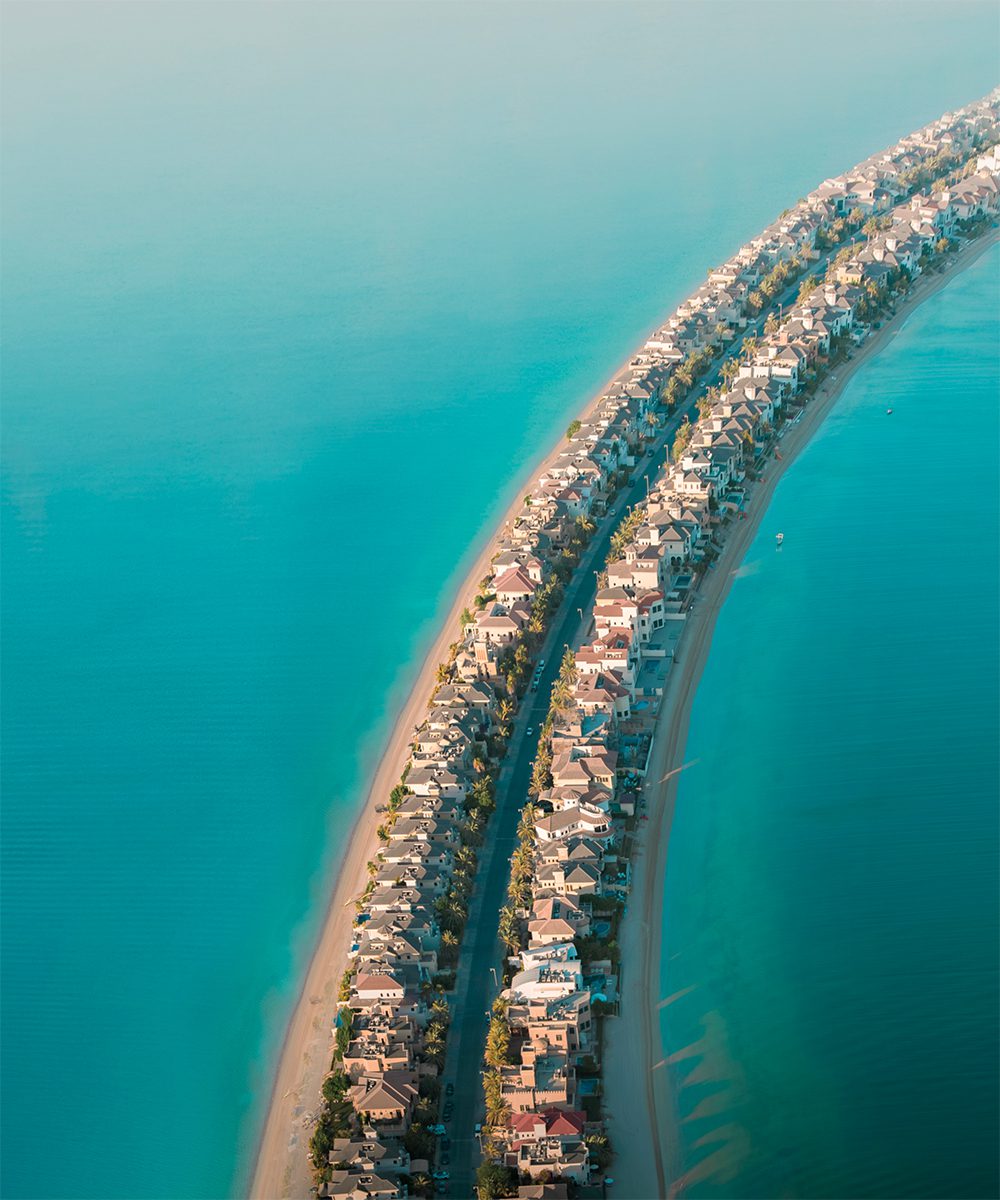
The world turns to Dubai with a delighted gaze; during Expo 2020, experiences are made superlative, and the city flings its doors open to the world’s most indulgent convention. For 173 days, Dubai hosts its global guests with opulent gifting of sensorial immersion, from the glimpse at the Hyperloop, a taste of world-class flavours, an expansive gallery of art, and a series of heart-stopping performances to entertain its outdoor crowd. Astonishing and ambitious, Dubai does not hold back, pleasuring every beholder with imaginative, almost jaw-dropping concepts of breaking the impossible into tangible innovations that spark change and transform the world, one indulging experience at a time.
Kyushu
The southernmost island of Japan bears a vibrant, tropical eccentricity, where coastlines are decorated with volcanic peaks and heart-stopping rock formations among the vibrant hilly landscape, creating the ideal stage for an extended summer. At its heart, Fukuoka charms with its cosmopolitan gifts—a gargantuan shopping district perched above a canal, a towering observation deck, and tranquil parks around the lakes, affording one quiet moments of meditating. The biggest city in Kyushu is home to grand castles and museums, as well as its satisfying cuisine, best taken in its local yatai. The food carts, at night, are enthusiastically flooded with night owls partaking beer and the much-loved Hakata ramen, served with thick broth stewed from pork bones.
Just nearby, Nagasaki bears the memory of World War II, not as a ghost of remorse, but as a beacon of light to remind the coming generation of better paths to take. Hashima Island still bears abandoned mines but, quite aptly, has become a favourite location for many Bond films. Decked with iconic churches, blissful shrines, and a grand harbour, the city sings with a song of memorial that beautifully keeps the atmosphere at peace.
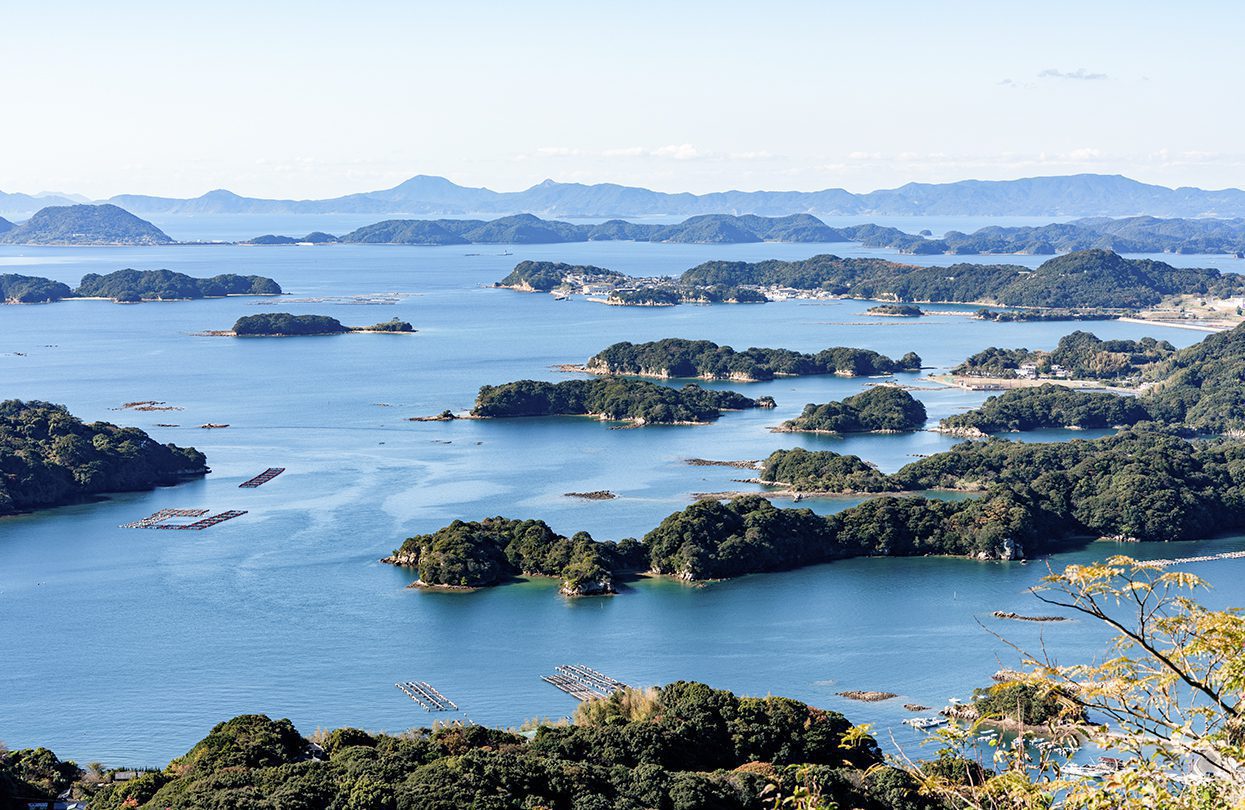
At Nichinan, waves ripple with energy as local surfers break along the blue coast. More water wanders are seen in Kurokawa, an onsen bath perched at the edges of a steep gorge that offers the best of a ryokan holiday. Ibusuki steams with its volcanic sand baths, where bodies are doused with the heated soil that promises many wellness properties. A beating volcano is also the backdrop of Kagoshima, whose majestic peaks watch over the island across the city bay, constantly puffing out a fine coating of ash that drapes the landscape with a snow-like blanket. As Tokyo swarms with tourists at the opening of the Olympics 2020, a shinkansen to Fukuoka avoids the sight of the crowds and an opportunity to revel at Japan’s other opulent offerings.
Turkish Riviera
Sights of bright blue waters swirling with hints of emerald hues, appearing like a glassy gem under the radiant Turkish sun. The waters of Aegean and Mediterranean kiss and collide, forming a charming landscape of placid waves, a tranquil, mountainous terrain and a strip of pleasant beaches that make summer seem eternal. It is dubbed the Turquoise Coast, a name aptly called for an archaeological hideaway curtained with abundant natural wonders that have long been kept as one of Europe’s secret destinations.
The romantic seaside has borne a few tales, most of them involving kings and queens, warriors and saints. Mark Anthony has outstandingly picked the riviera as a gift to Cleopatra. The blue-dappled waters and the volcanic mountains of Antalya have set the inspiration for the mythical monster, Chimera. While no terrifying beings lurk in its whimsical surface, the Turkish Riviera continues to lure adventurers in its harbour, bathing them with the warm air as yachts quietly glide across its glassy surface and indulging every onlooker with an otherworldly aura of fantasy as if they were pulled out of this world, and penned right on a page of a book.
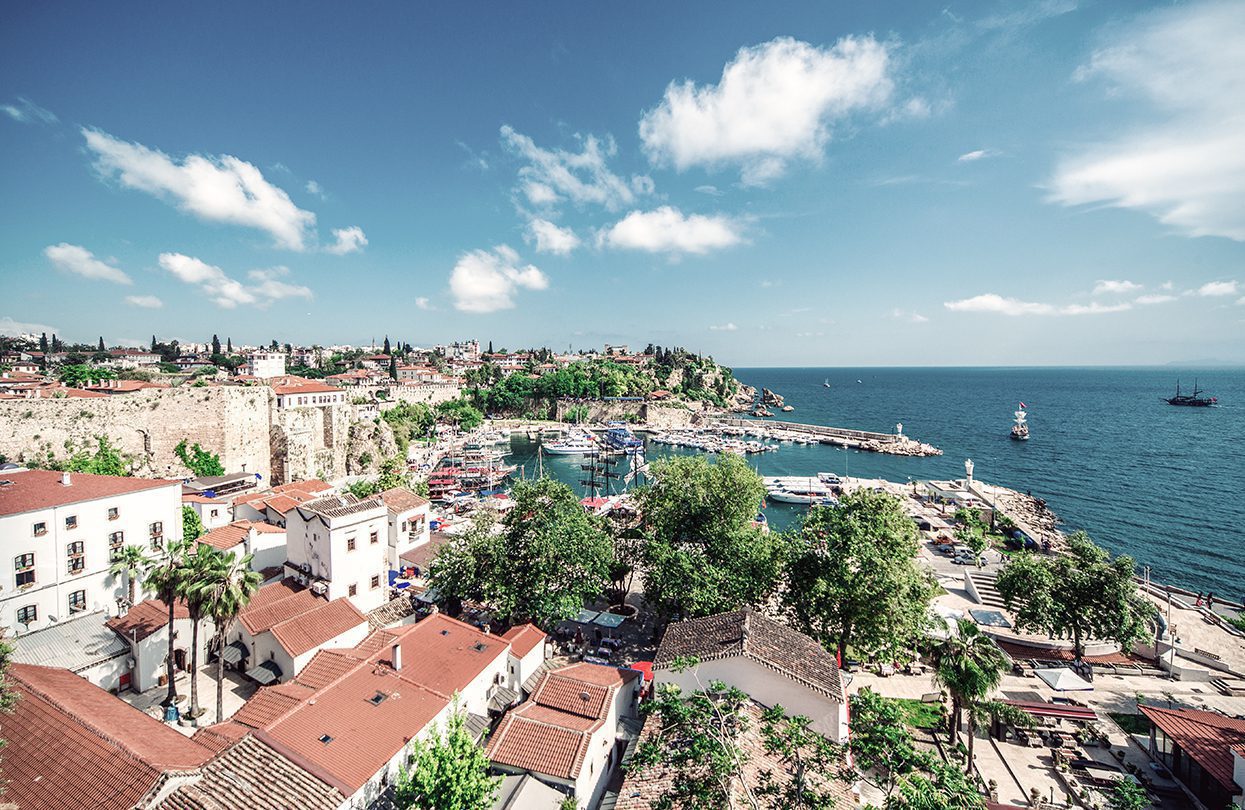
Antalya cityscape in Turkey, photo by Alex Tihonovs
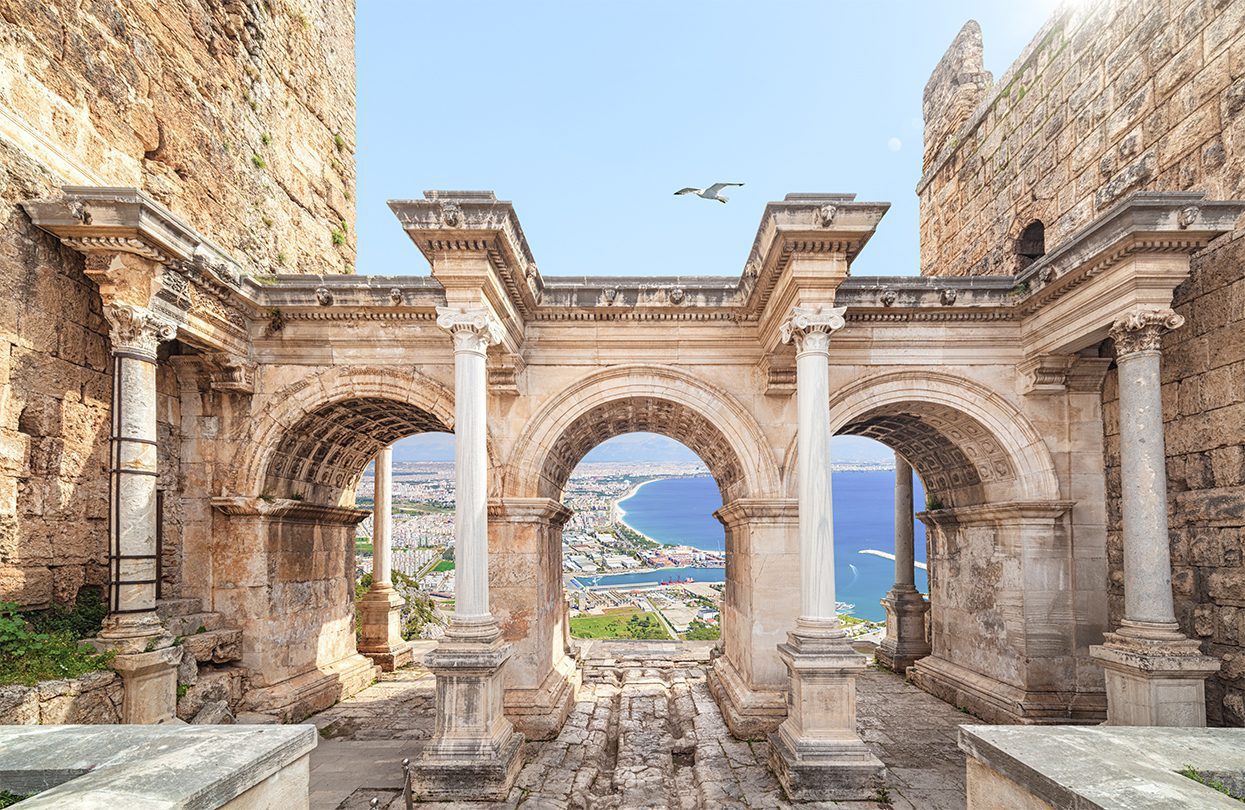
From a distance, one could see the glorious ruins of its past splendour—the Temple of Apollo, the Lycian tombs carved on a rocky hillside, and the ancient fort in Pattara—the birthplace of St. Nicholas, and home to many nesting sea turtles. Red-roofed resorts are scattered along Alanya, creating a striking contrast against the verdant hillside and the hue of the sea. Olympos astounds with its unspoilt setting draped with rocky ruins of ancient baths, a temple, and a necropolis. Lodged on a hillside is Cirali, known for the burning flame of Yanartas, a stone set ablaze. While myths have once blossomed from this whimsical riviera, all of the delightful experiences are true.
Tel Aviv
The balmy Mediterranean coast exudes with frenetic energy as a cosmopolitan playground comes to life by sunset, luring lovers of nocturnal fun into its hedonistic maze. As soft waters ripple quietly over its palm-fringed shore, the heart of Tel Aviv glimmers with a brocade of swirling laser lights, where below its avenues, locals are absorbed deep in unsung frolics. It is a Mediterranean Manhattan; sleep is foregone at the lures of delicious EDM beats and a sip of liquid ambrosia, for the night is young, and so is everyone else.
Morning induces a complete switch; the cloudless sky creates a stark glare on its commanding cloister of architecture—glorious Bauhaus buildings cloistered in the White City, and its beach promenades. Countless dining venues parade along the shore, creating matchless opportunities to dive into delightful breakfasts while enjoying the sunrise. Jaffa’s Old City, one of the oldest port hubs in the world, still beams with its nostalgic marvel—white stone stairways accentuated by rugged palm trees lead to a maze of stores and Jaffa’s very own souk. Close by, Tel Aviv Museum of Art showcases Israel’s most complete collection of contemporary masterpieces, showcasing diverse forms of exhibitions for a limited season. This is no surprise. Constantly in transformation, the Hill of Spring daily blossoms into an atmosphere of newness, being naturally experimental, whether in taste or experience.
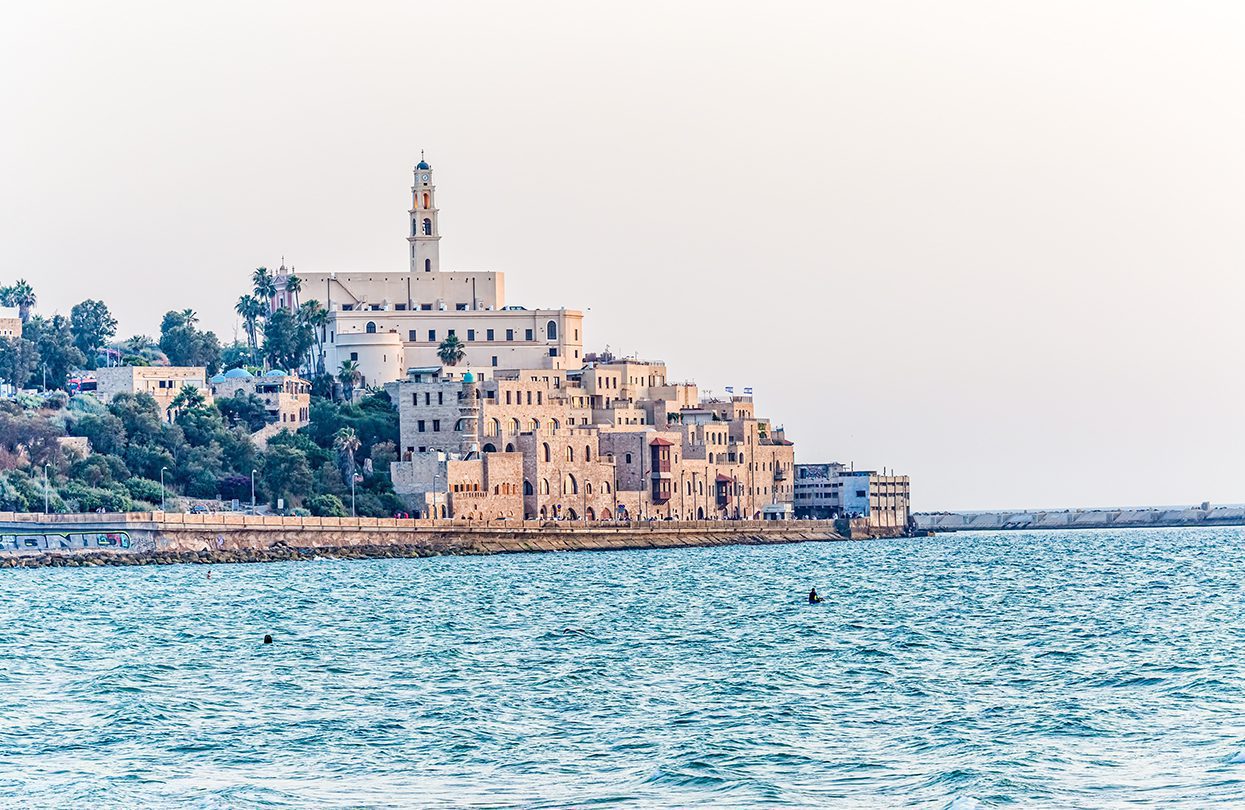
Charmingly snuck within Rochkach Street, Neve Tzedek Quarter shines with European-Jewish styled homes that were erected since the 1880s, all of which are beautifully preserved and now transformed into art boutiques and quaint cafes. The enchanting alleyways lead to Tel Aviv’s most famous ice cream parlour, and a series of swanky restaurants that pleases with its virtually aesthetic plates, and indulgent flavours, from Popina’s French-inspired offerings, to Cordero’s southern European gastronomy.
Central Vietnam
Sparkling yellow-green terraced hills overflowing with greenery are set beyond calm waters, where small boats cruise placidly during the day. As the evening sets in, the stars sparkle in their quiet glory, along with the small lanterns that twinkle along with their cadence. Deep into its bosom, ornate monuments and towering pagodas beam with their rustic beauty, preserved by the people with the warmest smiles in Southeast Asia. Central Vietnam is a melody of unique terrains—grand, sandy beaches, delectable islets quirkily creating a mini archipelago, and majestic mountains that hide many unfathomable wonders.
ĐồngHới, about three hundred miles to the capital Hanoi, is home to Vietnam’s recently discovered natural treasure: a series of caves tucked underneath its rocky skirts. Once home to the Champa empire, the temple city of MỹSơn near Hội An is a UNESCO World Heritage Site, much loved for the romantic air resulting from its painting-worthy scenery of colourful lanes and cultural buildings all lined up by the canals and bay – a melting pot of cultures.
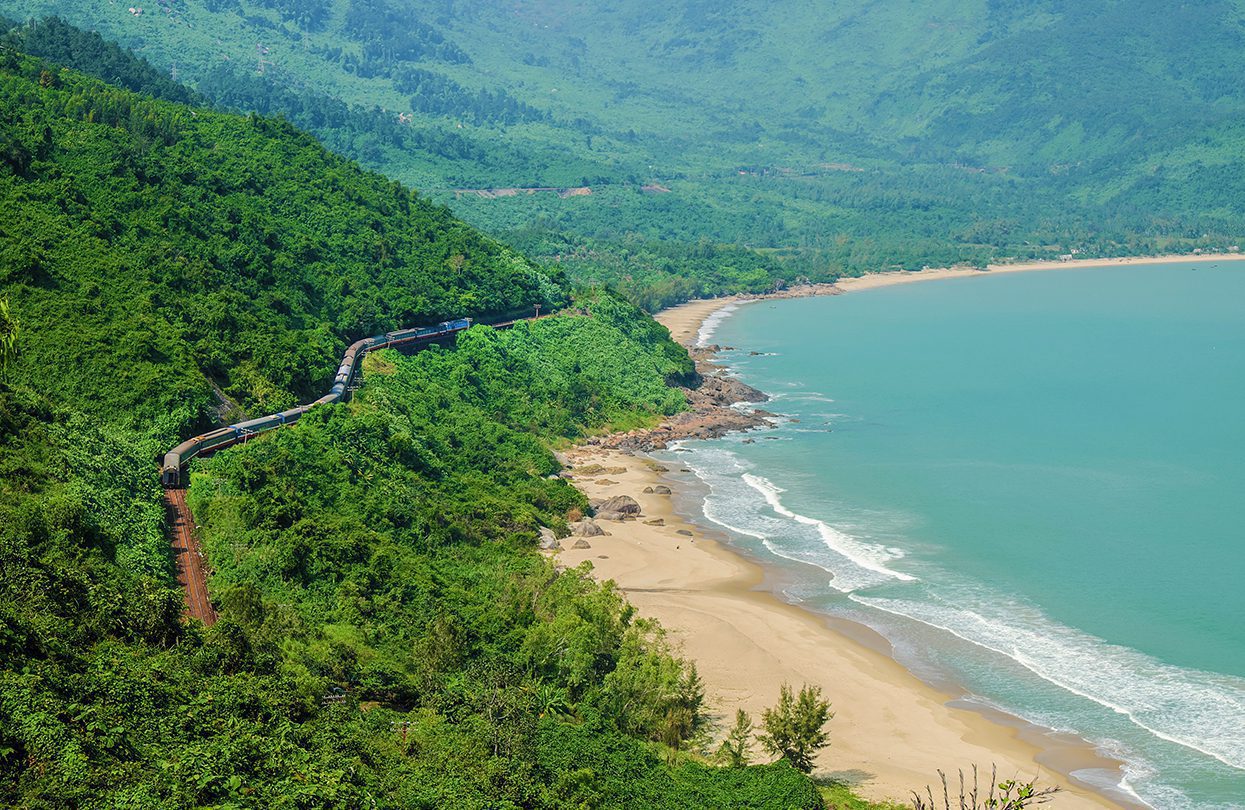
Panorama scene of Lang Co beach, Hue from Hai Van mountain pass at Da Nang, Vietnam, photo by xuanhuongho
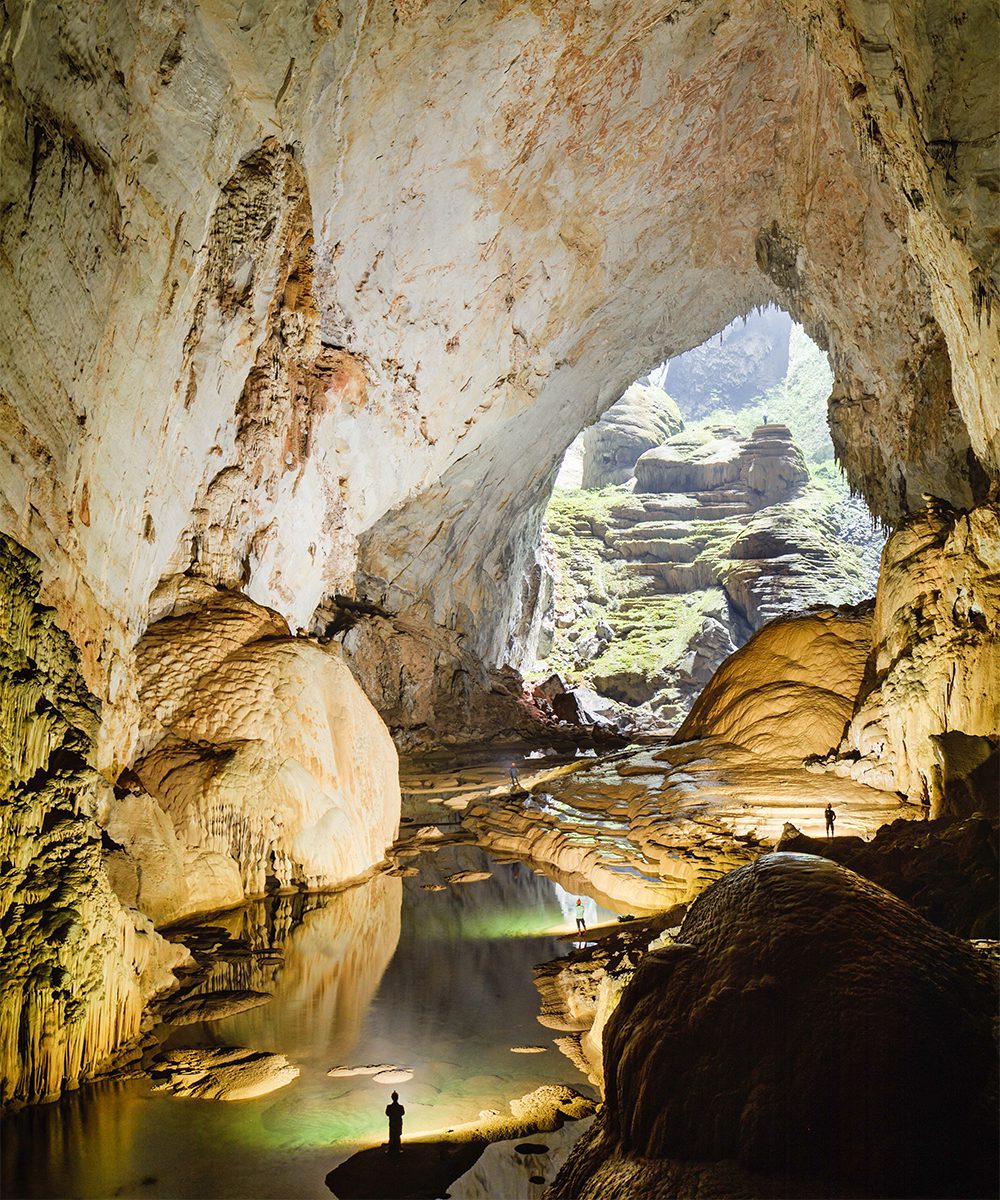
Huếis bequeathed with another UNESCO medal, an ancient city that traces its roots to the 4th-century, lined with dazzling pagodas in sculptured splendour singing remarkable tales of an imperial city, complete with palaces, shrines, citadel, a Forbidden Purple City and statues of warriors and horses guarding the secrets of ancient tombs. Local cuisine, including the savoury BúnbòHuế and the clam-sprinkled Cơmhến gives any ardent epicurean a taste of Central Vietnam’s bold and brave flavours.
Da Nang, a coastal city, marks the halfway point of Vietnam, blessed with beaches, marble mountains, and a unique French flare in certain quarters. The eccentric city makes a dynamic transformation, stirring up global attention with its sea-strip decked with hotels. The Dragon Bridge, on weekends, stuns with a breath of fire, while other more traditional locations cater to the ardent lovers of culture. Dramatic landscapes are on display at HảiVân Pass, an impressive coastal road, cradling in their folds many wartime relics including gun towers and a decrepit fort.
Rijeka, Croatia
A whiff of old Europe slowly soaks the atmosphere by the Kvarner Bay, with glistening golden light reflecting on the waters late in the evening. Dazzling white yachts and small fisherman’s boat communally parked by the port, all revelling in the same placid waters by the shore. The city is a maze beyond time; a grand old clock greets the vintage-dressed columns of expansive buildings, all adorned by bright green trees that create a vibrant stage against the breathtaking metropolis. It is the third-largest city in Croatia, a significant seat in maritime transport and shipbuilding.
There is an Italian vibe to Korzo, the heart of Rijeka, a captivating promenade where locals speak fluently of Fiuman, the Venetian language. Once surrounded by walls, the City Tower remains an iconic nostalgia of the 17th-century where until today, people arrange to meet sotto la torre, or under the tower. Surrounded with neoclassical buildings and Gothic churches, the old city is a lingering memento of the region’s transformation, a delightful metamorphosis from a turbulent 1800s, making it one of Europe’s most sought-after cities in 2020.
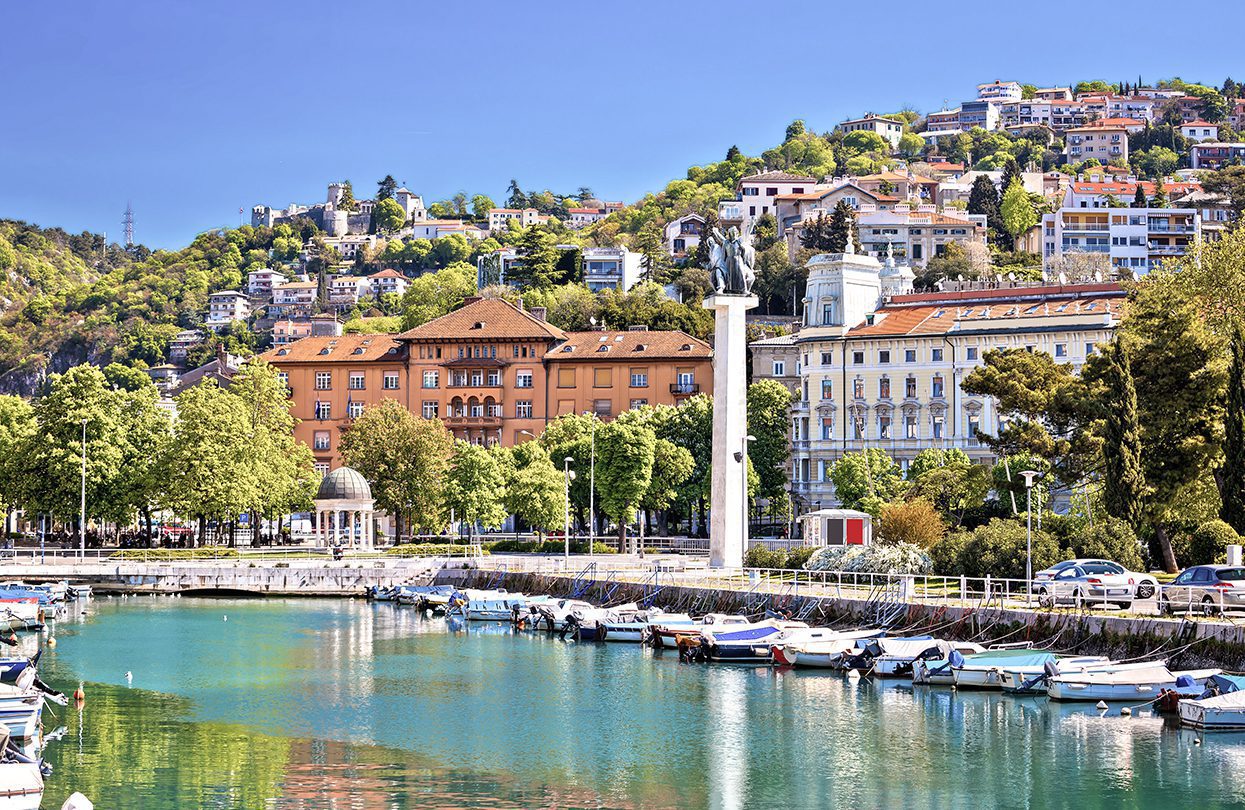
The majestic Trsat Castle sits on a hill, overlooking the views of the city from within its fortified walls, but the archaic wistfulness of the city is not its only best angles. In the east, Kantrida Beach lures with its natural beauty, being placed in proximity near the city football stadium. Sports enthusiasts find their way in the beach volleyball court or its bar. Preluk is destined for high-octane wind and water sports, most-visited during airy mornings. From the city centre, National Park Plitvice Lakes take less than 3 hours to be reached; the magnificent natural spectacle is worth the visit, with its glimmering waterfalls, crystal clear water, bounty of trees, slithering wooden bridges and abundant sunshine.
Egypt
The land of the pyramids rises mightily from its glorious past, a symbol of the eras where its bejewelled Pharaohs ruled the Nile and prevailed to keep their legacy alive. It is an oasis bathed in gold, green and blue, with sphinxes that watch over the horizon. The sprawling desert kingdom remains to be one of the world’s oldest cultures, erect and unbothered from the harsh, arid climate and the metamorphosis of time.
As if turning back the clock, many of Egypt’s nostalgic backdrops remain: colourful souks line up its quaint towns, rows of camels placidly traverse the postcard-perfect vista, and the mythical river of Nile still gurgles with its sparkling waters, glimmering with the bright tones of the sky as feluccas sail along the lush delta. Desert rock temples of animal-faced deities watch over the isolated landscapes that create moments of pure adventure. In Luxor, the Valley of the Kings takes the prominent spotlight, being the place where Tutankhamun was once buried in secret. Mountains are carved out with faces of its former rulers; across the Lake Nasser, the Great Temple of Ramses II in the Abu Simbel complex intimidates every curious seeker with four colossal sentinels guarding the entry.
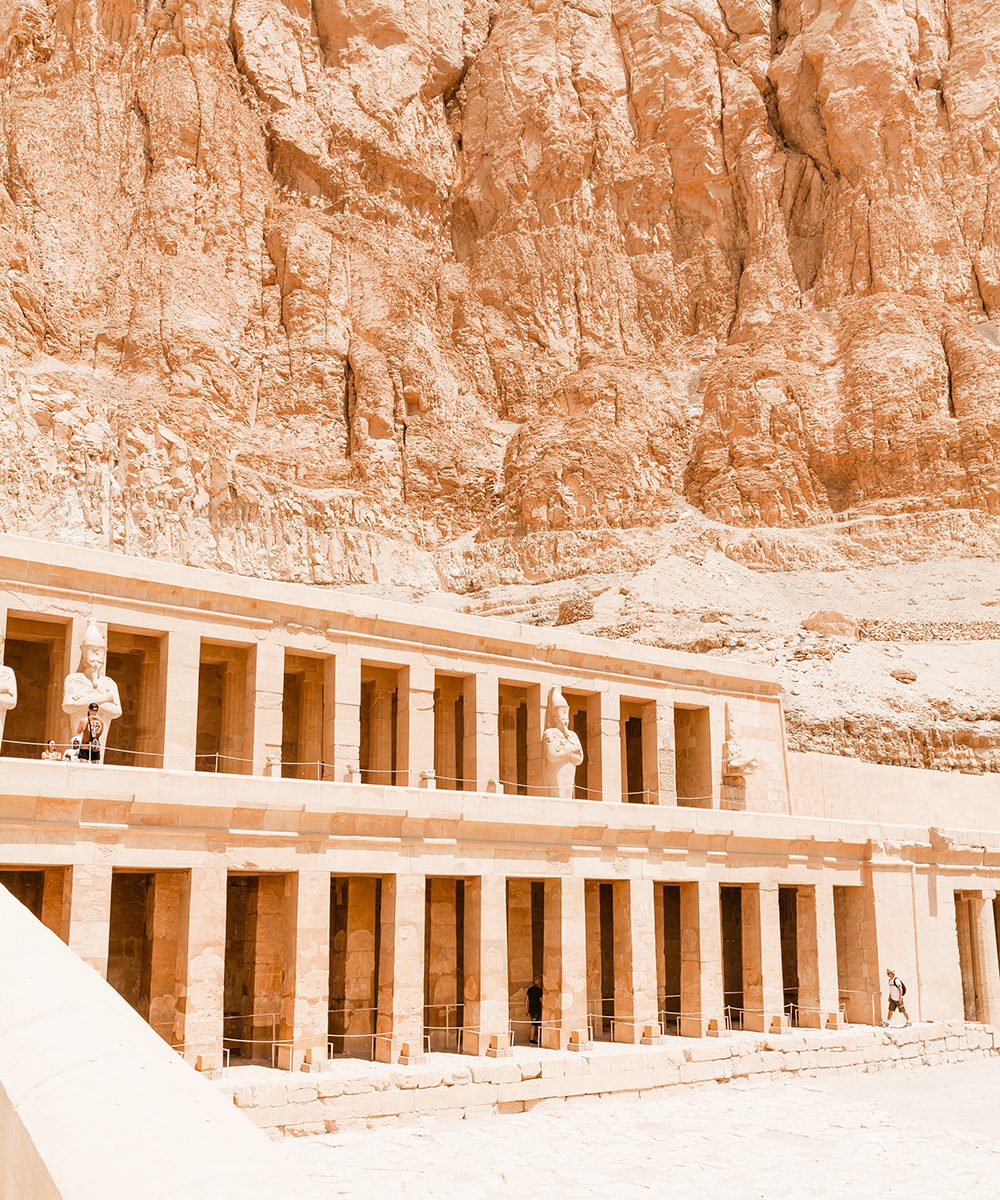
At Cairo, the City Victorious, the capital flourishes with the local cuisine and traditional garb, celebrating with colours and cheers while anticipating the opening of the Grand Egyptian Museum. This ten-year culmination of curation and construction, two-kilometres from the Pyramids of Giza, will now hold the largest collection of artefacts dedicated to a single civilization. Sprawling 5.2 million square feet, the palatial conservation centre contains more than 46,000 artefacts, bearing in its bosom glass-encased fragile stonework, throne room objects in gold, mystical bed carvings, and preserved royal tombs where an international team of researchers still seek to unearth Egypt’s numerous well-kept secrets.
Guatemala
It is a land kissed by the gods, wonderfully endowed with the vistas of resting volcanoes and surreal swimming holes hidden deep in the valleys. From Lake Atitlán, tepid waters softly stream from a bubbling crater, deliriously surrounded by shadowy volcanoes all standing in their perfectly pointed cones. The town of Panajachel, sitting close to the modern Eden, stirs with vividly woven drapes and traditional textiles made to hug the wearer before entering its string of serene coffee plantations and a mythical butterfly garden. At SemucChampey, bright green tropical botany envelope the mountainous milieu standing on tiers of six pools, many of which majestically spurt underground water that streams over to Cahabón River. The lesser-known Monterrico Nature Reserve is a serene sanctuary to many sea turtles and armadillos; at nightfall, this dramatic beach responds to a pastel-pink sky, with the misty volcanoes making an appearance from a distance.
One must not forget to see Tikal, in whose bosom lies the glorious Mayan citadel wrapped in lush green rainforest. Ruins of old temples and palaces give one a glimpse of the Lost World, stirring dreams of old treasures through the moss-covered, majestic stone structures tucked deep in the mountains. Tikal, however, isn’t the only home to Mayan ruins; once a ceremonial centre, Uaxactún bears pyramids yet to be excavated and restored and is home to the civilization’s oldest astrological observatory.
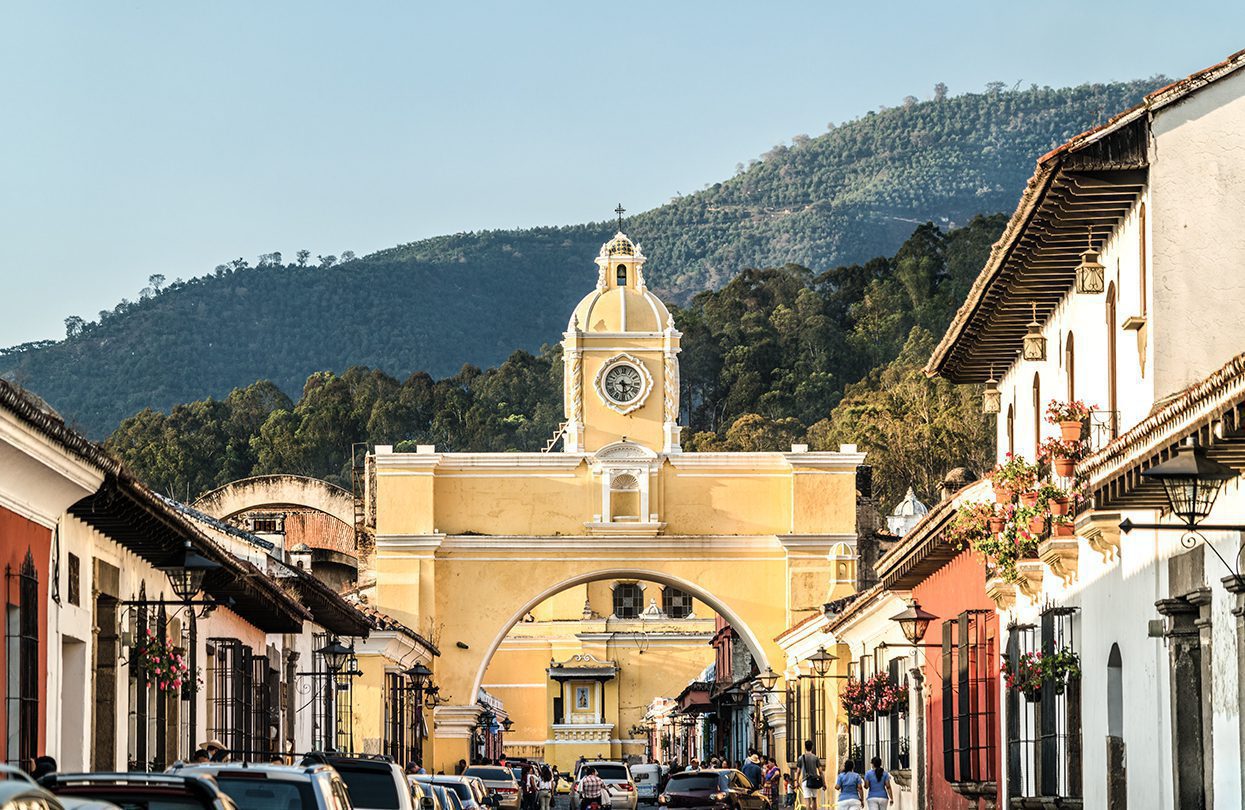
The Santa Catalina Arch and Agua Voclano in Antigua Guatemala, Guatemala, photo by Leonid Andronov
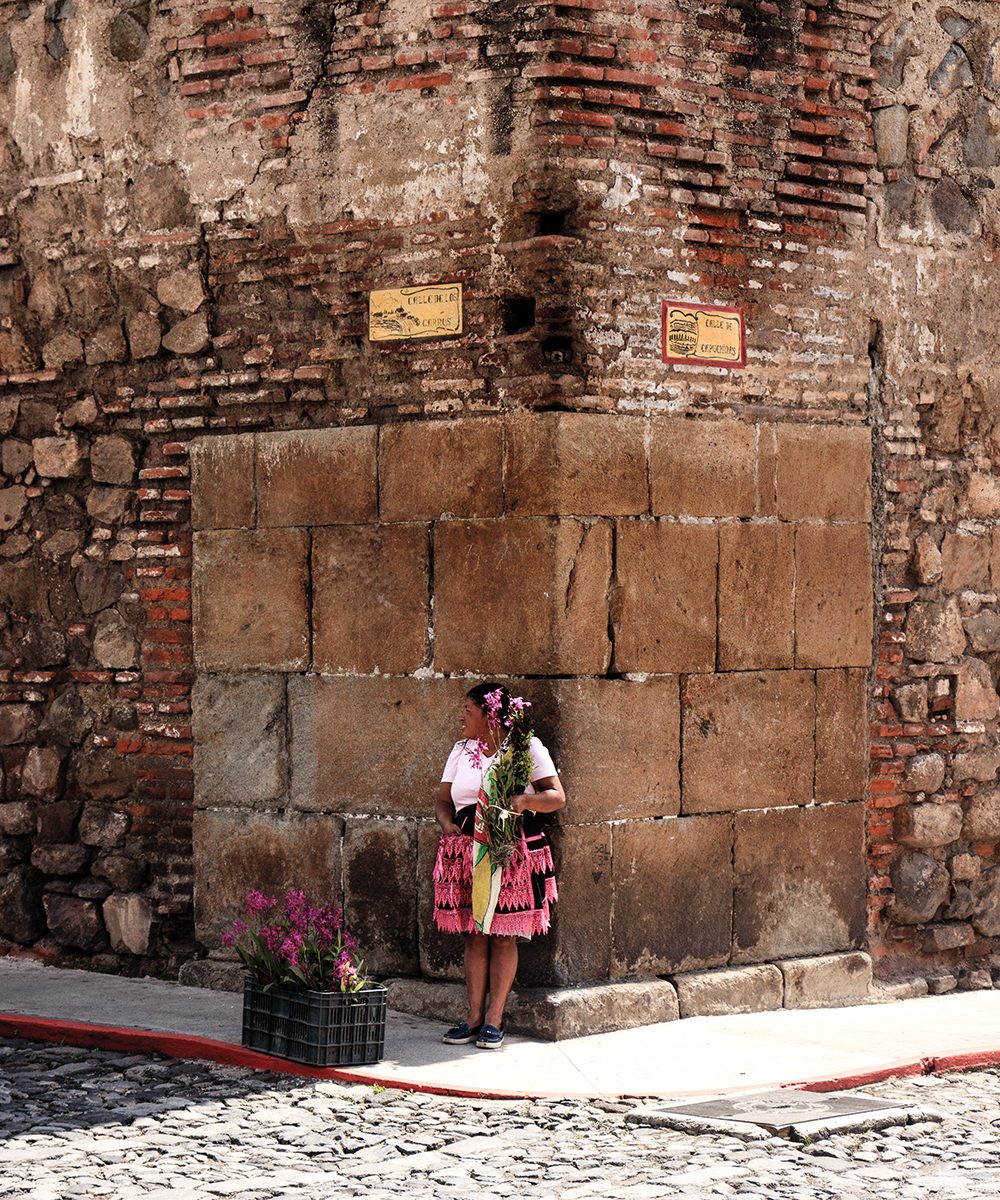
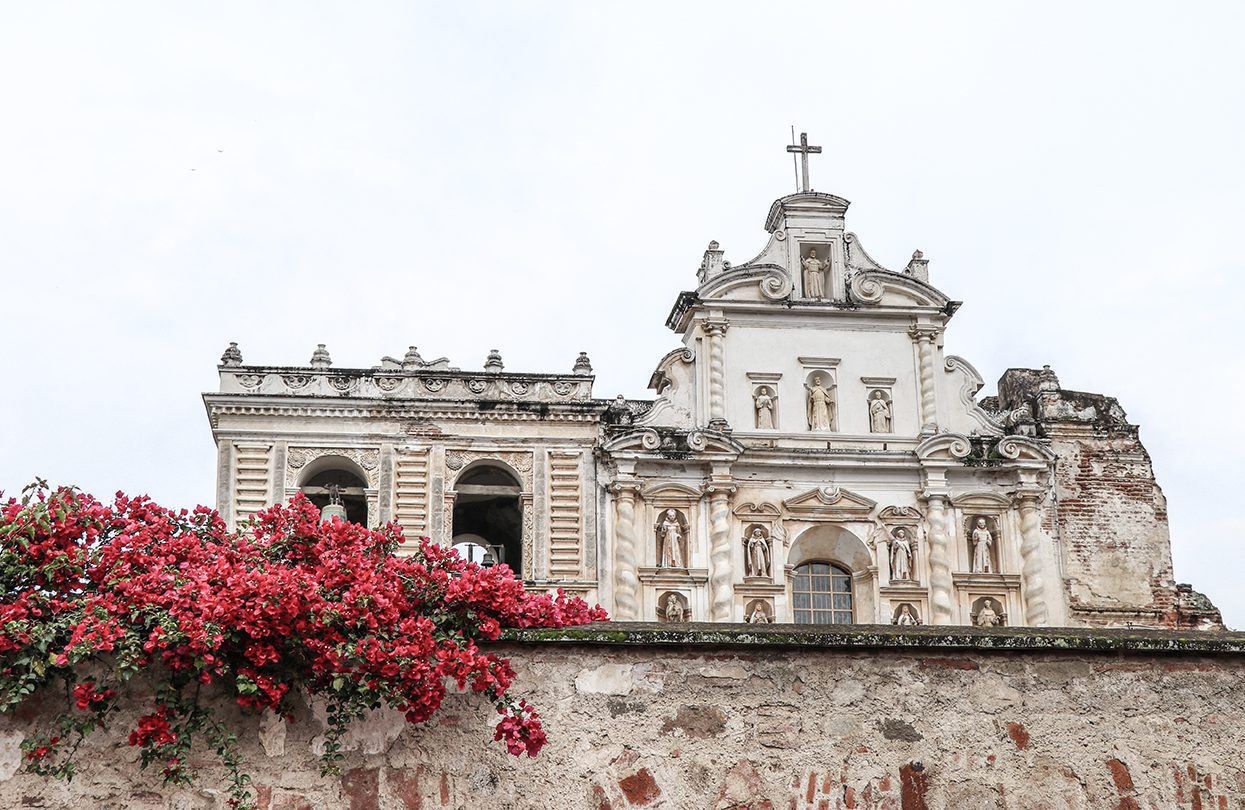
At Los Amates, a 35-metre rock brims with a dramatic waterfall only reached through an adventurous hike between smaller rivers one can liberally wade through. The dreamy Laguna Lachua is a yet-to-be-discovered tourist favourite, a jungle home to a colony of toucans and tapirs, gorgeously embraced with an abundant jungle and a crystal-clear lake. While the photogenic city of Antigua giggles with a crowd admiring its colonial air, Quetzaltenango mimics the same atmosphere. The less-crowded spot is draped with cobblestone streets and vibrantly hued buildings, bubbling with Guatemalan hospitality and gastronomy.
Sicily
Red-roofed houses parade down the rocky stone cliffs, all creating an otherworldly spectacle by the turquoise waters of the Mediterranean Sea. At daytime, the coastline lures with a haunting, colonial air, with blush-toned walls against the deep green leaves of the fertile olives and vineyards, all sprouting from the volcanic soil with incredible lushness. Hung with the same latitude as the cheery coast of north Africa, much of Sicily bears a temperate climate all year round, reaching peaks in summer, but that can be easily washed off by the fresh splash of the sea.
It is, on the map, the toe in Italy’s boot, and in Hollywood – the birthplace of The Godfather, but there is more to it than its placement. The historic coast bears remnants of its glorious past, one beautifully rendered by the breath-taking Palazzo Nuovo, built by the Normans who valiantly conquered Italy from 999, and carving a throne in the island for decades in the 1100s. Mornings are spent along Mount Etna, a decadent patchwork of posh orchards draping its skirt, and an active volcano gurgling its next astounding outburst at the top. Jeeps pierce through the land on day tours, providing a thrilling introduction to this earthen miracle.
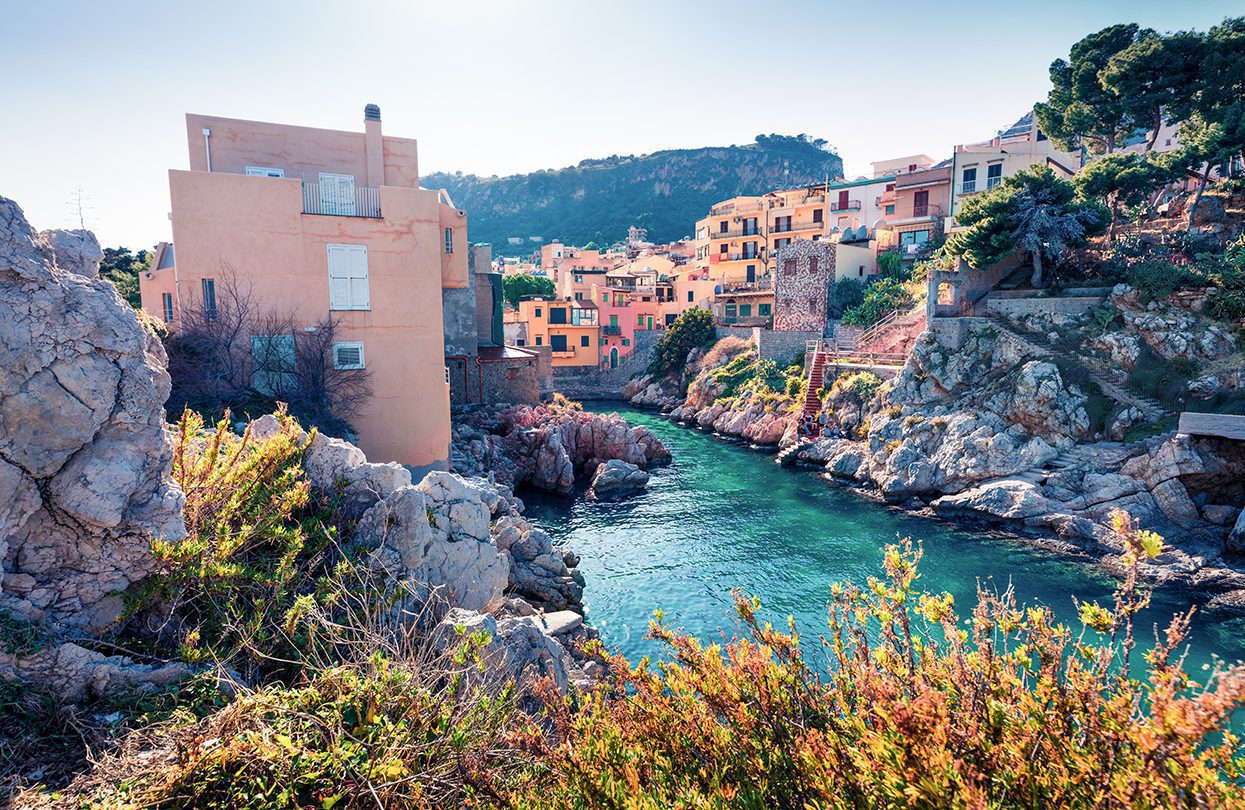
Palermo is a sensational vista at night, radiating fiery energy as its restaurants open their doors, beckoning with the strong flavours of the Mediterranean gastronomy, all paired with local wine. Wander around the Palazzos and dive into the many restaurants opulently draped with swanky décor or visit sommeliers and engage in a wine-making class for a new experience. Ruins are best visited with guides, who’d tell stories behind the monuments’ archaeology and history while strolling around picturesque views. The Cave di Cusa is an unsung spectacle—an abandoned quarry now magically strewn with flowers that crept their way over the tall columns, making an Instagram-worthy landscape.
Mexico City
A colourful tableau of baroque architecture, intermingling with a kaleidoscope of brightly-coloured homes line up the streets with a convivial warmth. The art-dominated capital is an everyday fiesta, with a tropical air hung under its consistently sunny sky. Palacio de Bellas Artes is an iconic landmark boasting with its bright orange roof, a sight not to be missed from the iconic plaza, its walls decadent with Art Deco artefacts. Perched nearby, the CatedralMetropolitana marks the city’s plaza with its gloriously Gothic stone facade, one carved from a Mesoamerican pyramid and took three hundred years to be built. An energetic buzz rises from Mercado de la Merced, where stall overflow with chatter while selling a bounty of produce, meat and local delicacies, all in a meandering maze.
Alameda Central, which once served as an Aztec market, is now rebuilt into an urban landscape Centro Historico, where locals soak up the sun by the manicured plaza. Frida Kahlo, an icon lovingly woven into Mexico’s artistic heritage, opens her house Casa Azul in Coyoacán, unabashedly displaying her cherished works, relics, and remains in her bedroom. At Xochimilco, Mexico City’s Little Venice, endearing trajineras glide the surface of the canals, sailing past floating vendors that sell packed food, or even beer. Souvenir hunters will fall in love with La Ciudadela, whose vibrantly artisanal marketplace overflows with Oaxacan-Mexican folk art, ceramic pots and handwoven baskets strung from palm leaves.
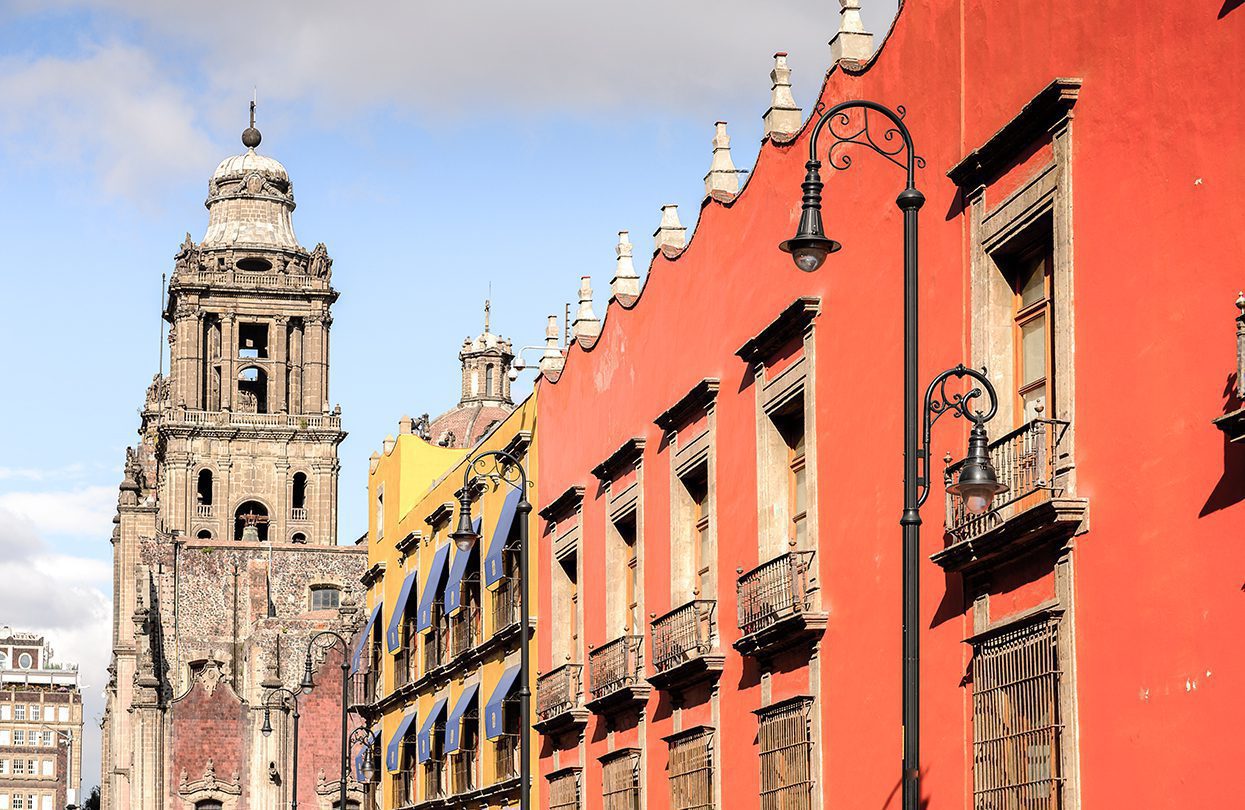
As the sky submits into dusk, crowds gather in churerrias to partake their favourite dessert, beautifully fried and sugar-coated before served with a cup of hot chocolate. After an early evening meal, wander into the downtown neighbourhoods and indulge in the local cuisine, with shops resounding with vivid jazz music and the appetizing smell of cheese and tomatoes, with a thrill of hidden libations from the many speakeasy bars tucked in the districts of Juárez and Polanco.
Galway
Dainty coloured homes perched by the face of the harbour, dreamily watching from the distance as birds flock around its breadth. The blue sky creates an artistic air around its web of sun-speckled water canals, interweaving with River Corrib. Past the city, a merry sight of old stone houses and flourishing marketplaces, are high rocks and hills, creating cornerstones for castles delighting in their sprawling solace, giving off a tinge of Bohemian to every onlooker. It is Ireland’s prized city, a gem tucked in the Wild Atlantic Way that simmers with an incredible food scene, including the Michelin-starred Aniar, walking tours and locally-styled gourmet. When lucky, one might chance upon its festivals, including two artistic events in summer, where the city parties from dusk to dawn.
Up the Latin Quarter, a cobblestone avenue in the old centre, lines many of the city’s best bars, some of them dating hundreds of years past, all exploding with the cordial Irish hospitality as performers dance and play music by the street. Just nearby, the refurbished Eyre Square features a celebrated fountain and a bronze cast of Ireland’s most prolific writer, Pádraic Ó Conaire. At the boroughs of St Nicholas, a glorious medieval church standing tall in the middle of the plaza, is a blissful weekend market bursting with local cheese, fresh fish and Mediterranean goods, all wrapped up for the perfect picnic. The Salthill Promenade is cradled on the Atlantic Ocean, a sweet suburb by the sea that has churned the tradition of kicking the wall.
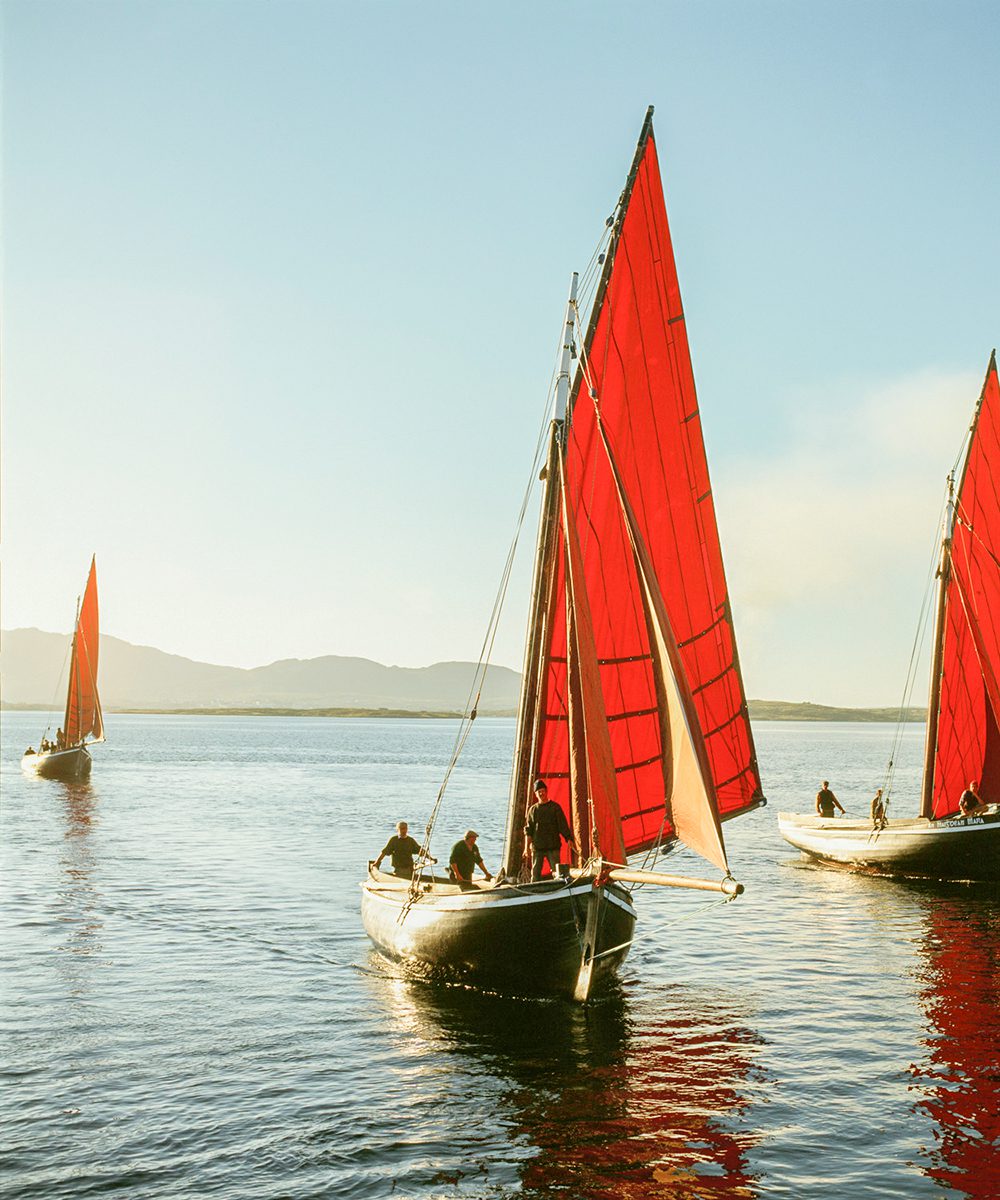
Kirwan’s Lane, named after the 14 Tribes of Galway, is a charming town with rustic stone houses that exude 16th-century whimsy, a sight that prevails on towards the Spanish Arch, one of the last surviving venues of the Ceann an Bhalla. From spring to summer, a boat glides upon River Corrib, sailing from Woodquay through the pastoral countryside, passing by the historic Menlo Castle now completely covered up in ivy. Small ferries lead to the charming archipelago of the Aran Islands, a quiet farming community with crisp, rural air. It is surrounded by trails of archaic forts, with limestone drywall that springs metres above the cliffs, beckoning for an enchanting hike. 
Subscribe to the latest edition now by clicking here.
© This article was first published in Dec-Jan 2020 edition of World Travel Magazine.
If you would like to comment on this story or anything else you have seen on World Travel Magazine, head over to our Facebook page or message us on Twitter.
And if you liked this story, subscribe to our bi-monthly World Travel Magazine, a handpicked selection of editorial features and stories from Global Destinations, Inspire Me, Insider, Style File, Wellness & Travel, City Travel, Suite Life, At Leisure, Short Breaks and much more.

